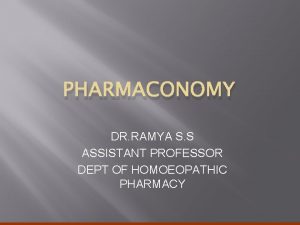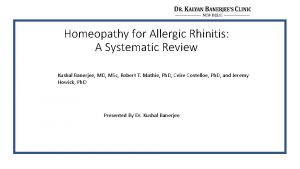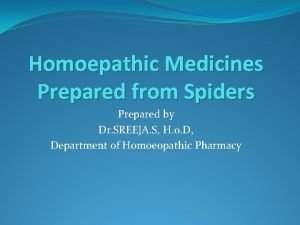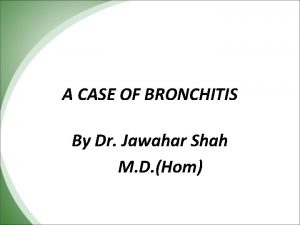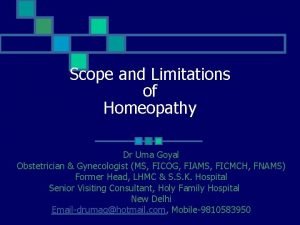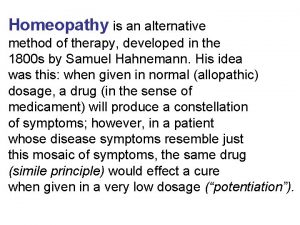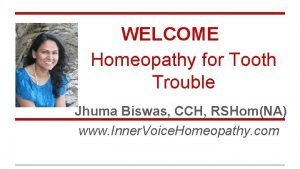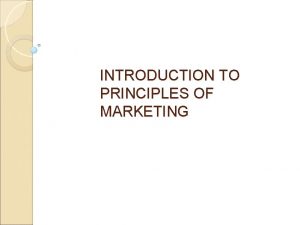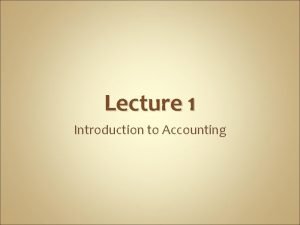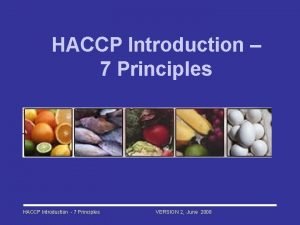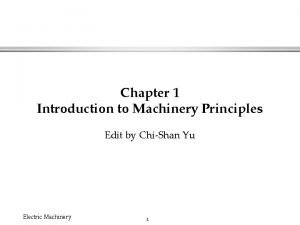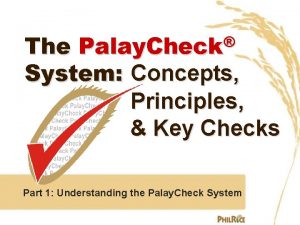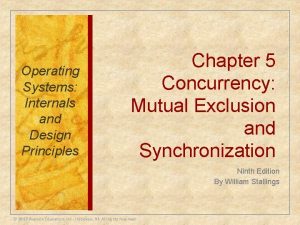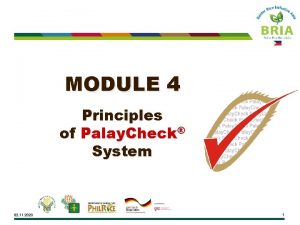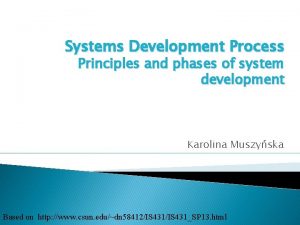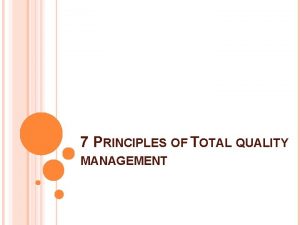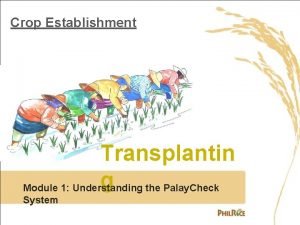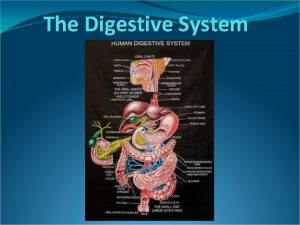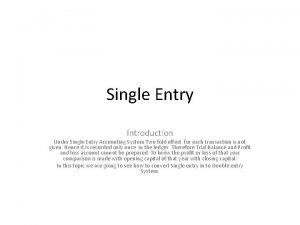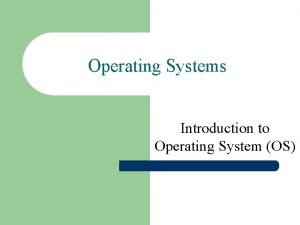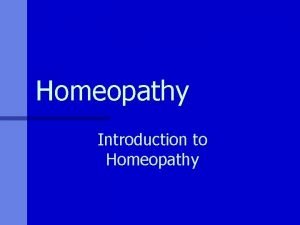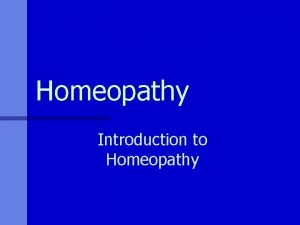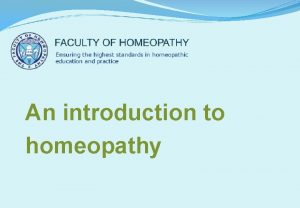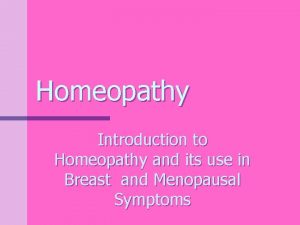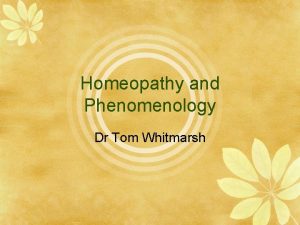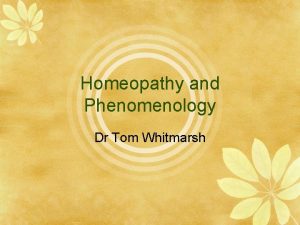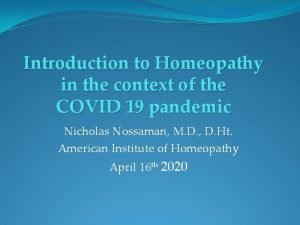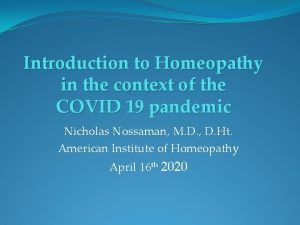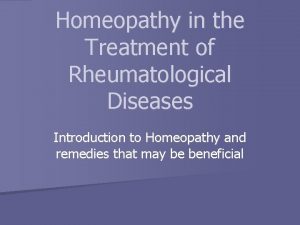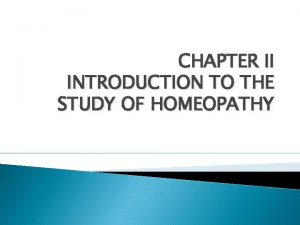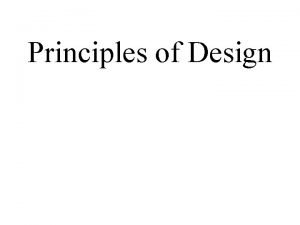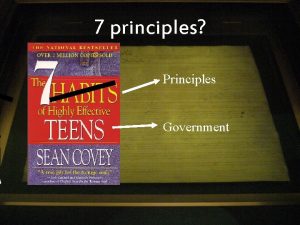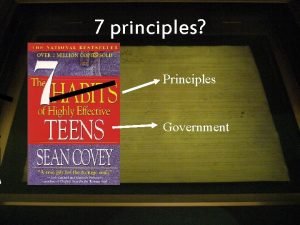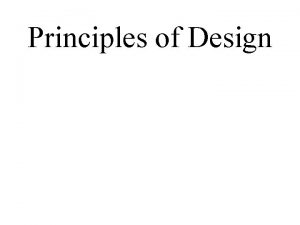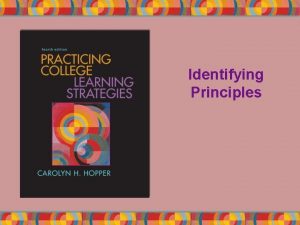Homeopathy Introduction to Homeopathy Principles A system of









































- Slides: 41

Homeopathy Introduction to Homeopathy

Principles • A system of medicine based on the principle of “like cures like” similia similibus curentur • Uses the smallest dose possible to produce a response

Origins • This principle was first described in Hindu writings over 3000 years ago • Also mentioned by Hippocrates , Galen in the 2 nd century and Paracelsus in 16 th century • More recently researched by a German physician Samuel Hahnemann who developed “Homoeopathy”

Hahnemann • Disillusioned physician • Tried cinchona bark • Gave preparations to family and students to prove • Diluted medication • Remedies

Examples of the similia principle • Peeling an onion leads to sore, runny eyes, itchy nose and sneezing - Allium cepa used to treat hayfever and colds • nettle stings produce a burning, itchy wheal on the skin - Urtica urens is a good remedy for similar skin lesions • arsenic poisoning causes severe vomiting and diarrhoea with burning pains and chilliness - Arsenicum alb. V. effective in gastroenteritis and food poisoning

Examples of the similia principle in medicine • Radiotherapy which is used to treat cancer also causes it • Amphetamines which produce hyperactivity, are used to treat hyperactive children • Immunisation • treatment of erythromelalgia with Praxilene?

Basis of Treatment • Homeopathy works with the body’s response to illness and remedies are prescibed according to the symptoms • one remedy can be used to treat several ailments • one ailment may need to be treated with different remedies in different patients

Materia medica • Known symptoms produced by poisonings • Symptoms produced by provings • Symptoms relieved when remedy given for other symptoms

Selecting the remedy • Detailed Homeopathic history • Repertorization • Materia medica

Homeopathic history • Details of presenting complaint - aetiology, aggravations, ameliorations, modalities • Aetiology : trauma, bereavement, never well since pregnancy, menopause, glandular fever • Aggravations : conditions that make symptoms worse • Ameliorations : improve symptoms • Modalities : conditions qualifying a symptom

Homeopathic history • General symptoms - patients’ reaction to their environment, heat, cold, weather • Food likes or dislikes, e. g. crave pickles, like fat • periodicity - frequency of symptoms - monthly, weekly, yearly

Mind or Mental symptoms • Placid, anxious, • Anxious on anticipation • Depressed • Weepy • Consolation • Easily bored • Jealous • Tidy • Fears • Company • Shy • Routine • Resentments

General appearance • Vivacious red-head • Nervous • Laid-back absent minded professor • Prim and proper • Scruffy • Extremely neat and colour coordinated • Weepy blonde • Lacks energy • Flabby handshake • Closed • Shy, hides behind mother • Anxious to please, maintain eye contact

The relevant kingdom • Animal, Mineral or Vegetable (Plant) • Animal – hunter/ hunted, victim, prey, pursued, escaping, nurturing, flying, pouncing, caged, free • Mineral – structural terms, cracking, crumbling, stable/ unstable, falling apart • Plant – sensitive to surroundings e. g light, warmth, smells, cold, damp,

Repertorization • Repertory contains details of symptoms produced by remedies listed under bodily systems e. g. mind, vertigo, head, eye, vision, ear, hearing, nose, face etc. • e. g. heartburn after eating - Aesc. agar. Am. c. anac. Calc. p. carl. Chin. Cocc. c. con. Croc. Graph. Iod. Lyc. Merc. Nat. mur. Nit. Ac. Nux v. Sep. Sil.

Repertorisation cont. • Strong features of the history in each area - mind, generals and local symptoms • The strength of a symptom in a rubric is indicated by the type, • i. e. bold type-strongly present, • italic - moderate, • ordinary type - symptom present for that remedy

Further considerations • Aetiology • Peculiar symptoms e. g. • burning sensation > warm applications • asthma > lying down • feels exceptionally well day before headache • Symptoms can then be fed into a computer

Remedies • These are prepared from : • minerals, • plants, • fish, • insects, • snakes and disease products

Sepia - ink sac of the cuttle fish • Irritable, intolerant of contradiction • Weepy, depressed, easily offended • Can’t be bothered, can’t cope • Indifferent to family, wants to run away • Brunettes, butterfly rash on face

Pulsatilla - wind flower • Mild, yielding disposition, shy, blush • Fair, fat, forty, blue-eyed • Laughs and cries easily, craves sympathy • < for heat > fresh air, < damp • > gentle movement, restless • Absence of thirst, dislike and upset by fat, pork, spicy food

Sulphur • Absent minded professor • Scruffy with dirty skin • < heat • Desires fat, salt, sweet • Skin ailments • Lazy, selfish, irritable • Hungry 11 a. m.

Case History • 40 yr old lady • Depressed, indifferent to family • lacks affection • anxious about finances • wants to be alone • > dancing, walking quickly • craves vinegar premens • Indifferent to loved ones : Acon. Ars. Fl. ac. Hell. Merc. Nat. p. Phos. Plat. Sep. • Fear of poverty: Ambr. Bry. Calc. f. chlor. Meli. Nux v. Psor. Puls. Sep. Sulph. • > alone: Bar. c. Lyc. Nat m. Plb. Sep. Stann. Staph. • > walking fast: Arg n. Canth. Carb ac. Ign. Nat m. Petr. Sep. Stann. Sul ac. Tub. • Desires vinegar: Apis. Arn. Ars. Hep. Kali p. Sep. Sulph

Preparation of the Remedies • Whole plant is macerated in alcohol mother tincture • 1 drop added to 9 or 99 of solution results in 1 X or 1 C potency • Succussed in between dilutions • Standard potencies : - 6 C, 30 C, 200 C, 1 M, 10 M, 50 M

Prescription • 6 C for local symptoms e. g. joint pain, skin eruptions • 30 C for acute illness e. g. influenza, diarrhoea and vomiting, childhood illnesses • 200 C if giving nosodes e. g. glandular fever nosode, pertussis, measles vaccine • 1 M or 10 M for strong emotional symptoms e. g. grief, P. M. T. , depression, anxiety etc.

Instructions for taking remedies • Homeopathic remedies are very delicate and should not be handled. • They are absorbed from the mouth and so are sucked not swallowed. • Should not be taken near food or drink as these may interfere with the absorption. • Store away from strong smells.

Direction of cure • From top to bottom • From inside to outside • From an important organ to a lesser one • May develop “old symptoms”

The clinical place for homeopathy • Where there is no effective allopathic alternative • Where conventional medication is unsafe • Where allopathy has unacceptable side-effects • To minimise the use of allopathy

No effective allopathic treatment • Allergies • Anger • Bruises • Colic • Fear/phobias • Glandular fever • Grief • Influenza • Mastalgia • M. E. /chronic fatigue • Nightmares • Premenstrual syndrome • Teething • Urethral syndrome • Warts

Where conventional medication is unsafe • Pregnant women • Young children and babies • The elderly • Anticipatory anxiety

Where the side effects of allopathy are unacceptable • Anxiety • Depression • Menopausal symptoms • Osteoarthritis • Situations requiring repeat antibiotics

To minimise the use of allopathy • Asthma/eczema • Constipation • Dysmenorrhoea • Hypertension • Migraine • Neuralgias • Recurrent otitis media/ U. T. Is/ sore throats

The rewards of homeopathy • Patient satisfaction • Effects on consultation technique • Intellectual achievement • The joy of detective work • Understanding aetiology • Personal satisfaction and fulfillment

Overall Outcome of Treatment with Homoeopathy - GHHOS • 1 = No change • 2 = Slight change • Improvement in wellbeing but not PC • 3 = mod improvement • 4 = good improvement • No symptoms as long as continue with remedies • 5 = cure • Asymptomatic without remedies 68% range from 3 -5

Conditions referred for homeopathy in 2004 • Asthma/eczema/allergies/hayfever - 17% • Menopausal and PMT symptoms – 16% • Rheumatological symptoms - 13% • Chronic fatigue syndrome - 10% • ADHD, IBS, UTIs, neuralgia, candidiasis, depression and anxiety, headaches, migraine, etc.

Audit of Homeopathic treatment for Rheumatology diseases • 1 – No Change • 2 – Sl Improvement • 3 = Mod Improvement • 4= Good Improvement • 5 = Complete Cure

Outcome of Menopausal Symptoms • 20% no change • 10% improvement in wellbeing • 30% some improvement • 34% asymptomatic - on remedies • 6% asymptomatic - no remedies

The evidence for homeopathy

RCTs - the meta-analyses • Kleijnen J, Knipschild P, Ter Riet G. Clinical trials of homeopathy. British Medical Journal 1991; 302 (Feb 9) : 316 -323. • Linde K, Clausius N, Ramirez G, Melchart D, et al. Are the clinical effects of homeopathy placebo effects? A meta-analysis of placebo-controlled trials. The Lancet 1997; 350 (Sep 20): 834 -843.

Kleijnen’s conclusion • They found that of 107 trials with interpretable results, 77 were positive. • They then looked at a sub-group of the most rigorous trials and discovered that 15 out of 22 found homeopathy to be superior to placebo. • One of Kleijnen’s conclusions was that the evidence found : would probably be sufficient for establishing homeopathy as a regular treatment for certain conditions.

Linde’s conclusion • Linde’s conclusion is “The results of our metaanalysis are not compatible with the hypothesis that the clinical effects of homeopathy are completely due to placebo”. • A reading of the study shows a clearly positive result for homeopathy • 42% of the trials were clearly positive and a further 39% showed a positive trend

Why learn homeopathy • Your patients will be using it • Your colleagues will be using it • There is a clinical need for it • It is rewarding
 Washington homeopathic
Washington homeopathic Pharmaconomy in homoeopathy
Pharmaconomy in homoeopathy Homeopathy for allergic rhinitis: a systematic review
Homeopathy for allergic rhinitis: a systematic review Latrodectus hasselti homeopathy
Latrodectus hasselti homeopathy Dr jawahar shah homeopathy
Dr jawahar shah homeopathy Homeopathy scope
Homeopathy scope Homeopathy the alternative
Homeopathy the alternative Jhuma biswas
Jhuma biswas Introduction to principles of marketing
Introduction to principles of marketing The gang plank
The gang plank Accounting principles and assumptions
Accounting principles and assumptions 7 key principles of haccp
7 key principles of haccp Introduction to machinery principles
Introduction to machinery principles Earth is a closed system
Earth is a closed system Respiratory system circulatory system digestive system
Respiratory system circulatory system digestive system Conclusion paragraph format
Conclusion paragraph format Toyota way 14 principles
Toyota way 14 principles Design principles of linux operating system
Design principles of linux operating system Principles of information systems
Principles of information systems Principles of palaycheck system
Principles of palaycheck system Operating system internals and design principles
Operating system internals and design principles Palay check
Palay check Design principles of unix operating system
Design principles of unix operating system Principles of system development
Principles of system development Operating system internals and design principles
Operating system internals and design principles Brake system principles
Brake system principles 7 principles of quality management
7 principles of quality management System 360 principles of operation
System 360 principles of operation Operating system internals and design principles
Operating system internals and design principles Dapog nursery advantages and disadvantages
Dapog nursery advantages and disadvantages Introduction of urinary system
Introduction of urinary system Digestive system
Digestive system Introduction to system analysis and design
Introduction to system analysis and design Single entry system introduction
Single entry system introduction Rms restaurant management system
Rms restaurant management system Slidetodoc.com
Slidetodoc.com Operating system definition
Operating system definition Mis meaning
Mis meaning Introduction of management information system
Introduction of management information system Single entry system introduction
Single entry system introduction Hvac system introduction
Hvac system introduction Introduction of
Introduction of

